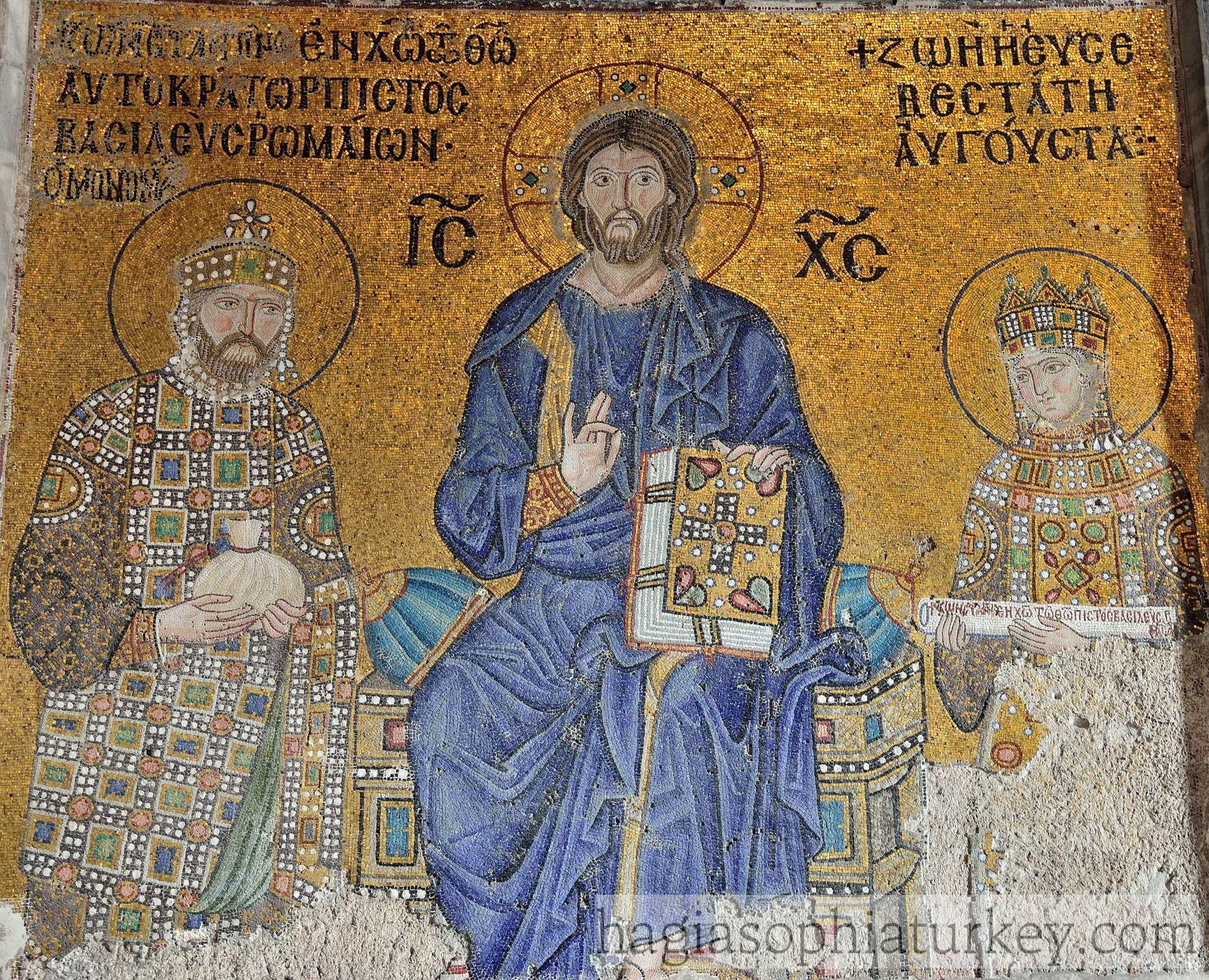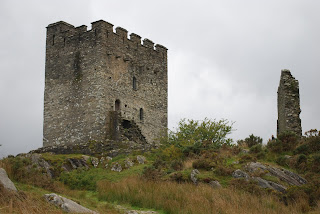.
The most daring feature of the buildings is the enormous dome. It is supported on pendentives (four round arches) so that it appears to be floating free. It was to be 900 years before any new dome was built in western Europe.
The interior of the church was famous for the mosaics it accumulated over the centuries. Many depicted Emperors and their Empresses giving offerings to Christ.
.
.

In 1054 a breach occurred between the Roman and Greek churches, which became permanent. The two became increasingly different in doctrine and organisation. Whereas the Popes in Rome aimed at independence of secular power, and claimed moral authority over the Kings of western Europe, the Patriachs of Constantinople were very much under the authority of the Emperor. Meanwhile, missionaries from Constantinople converted the pagan Russians to the Greek Orthodox faith, with very important consequences for the future.
For more than five hundred years after Justinian the city fought of attacks by Persians, Avars and Arabs, before falling amidst frenzied looting and destruction to the French and Italian soldiers of the Fourth Crusade in 1204. For the next few decades Hagia Sophia became a Catholic church before Greek Emperors regained control. The Byzantine Empire never recovered from the disaster, and the territories under its control continued to shrink.
The Turks irrupted out of Central Asia in the 11th century, defeated the Byzantine armies at the battle of Manzikert in 1071 and occupied most of Anatolia. Finally in 1453 the Sultan Mehmed the Conquerer seized Constantinople itself. The city was renamed Istambul and Hagia Sophia was coverted into a mosque. The mosaics were destroyed or painted over, huge rondels bearing the names of Allah and Mohammed in Arabic calligraphy were hung in the corners under the dome, a mihrab indicating the direction of Mecca was placed in the apse and tall minarets built outside. Within a century the Turks ruled a vast dominion, the Ottoman Empire, stretching from the gates of Vienna through into Iraq, Arabia, Egypt and north Africa. The Sultan was also the Caliph: the successor to the Prophet Mohammed and spiritual leader of all Moslems throughout the world.
The fall of Constantinople left Russia as the only major state following the Orthodox faith. This led to many Russians to the mystical belief that Moscow was "the third Rome", and that their civilisation was not only unique but singularly blessed. This belief has persisted, and has had an important impact on the way Russian have viewed the rest of the world.
In the 19th century the Ottoman Empire shrank at a rapid rate and finally collapsed in the First World War. The army chief Kemal Ataturk took power, abolished the Sultanate and the Caliphate and created a secular state, with its capital at Ankara, that was ethnically Turkish; the Greek and Armenian minorities have been killed or driven out. Only the Kurds remained to challenge this ethnic unity. The Roman alphabet replaced the Arabic one, though neither is really suitable for the Turkish language. Among other reforms, Hagia Sophia ceased to be a mosque and became a museum, with the mosaics again revealed after centuries of plaster and paint were carefully scraped away.
Some personal notes. When I toured Turkey some thirty years ago, I was struck at how many statues there were of Ataturk. He seemed to be everywhere, striking heroic poses, leading children towards the glorious future, and so forth. It reminded me very much of the prevalence of Lenin statues in the Soviet Union. In Cappadocia and other places we found numerous relics of Greek and early Christian civilisation. There were churches cut into the soft rock, with faded religious paintings on the walls. All were now deserted. Our guide explained that after the First World War "the Greeks were returned to their homeland". Since the Greeks had lived in this region for at least 1500 years before the arrival of the Turks,I was tempted to ask when the Turks would return to their homeland, which was somewhere around Uzbekistan.
A few years later I had a conversation with the historian Professor Norman Stone, who was about to take up a post at the Universary of Ankara. I asked him why he thought that Ataturk had succeeded in imposing a secular society in his country where the Shah of Iran had failed. He replied, provocatively, by asking why Ataturk had succeeded where Lenin had failed! But with Hagia Sophia becoming a mosque again, it may well be that Ataturk failed too.














